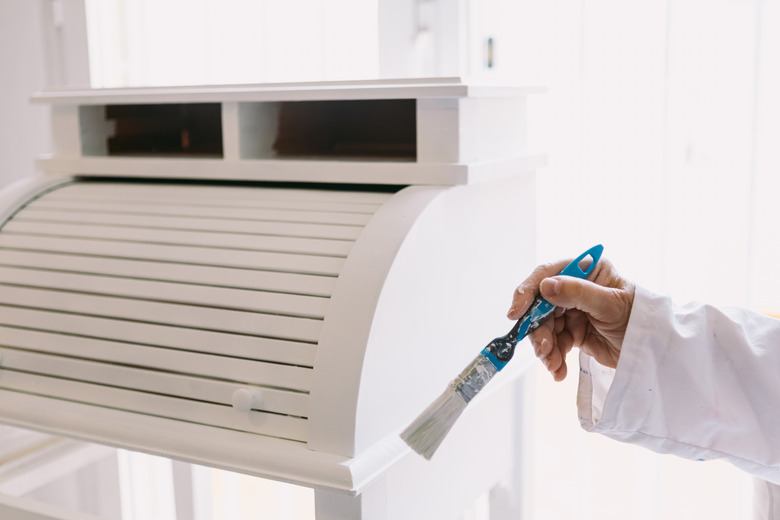Can You Paint Over Clear Coat?
We may receive a commission on purchases made from links.
Clear protective finish, sometimes called clear coat, varnish, polyurethane, or sealant, is a protective layer applied to help protect paint. But because sealant is so hard and smooth, it can be difficult for paint to properly adhere to it if you choose to paint over the finish. In other words, without proper preparation, paint applied directly to a clear coat will peel right off the surface, but if you take the time to properly prepare the surface before applying paint, you shouldn't have any problems painting over finish.
Choose the Right Paint
Choose the Right Paint
Both acrylic or oil-based paint can be applied to clear coat. Oil is typically a little more durable and adheres better, but acrylic dries faster, has fewer fumes, and is easier to work with overall. Be sure to choose a paint compatible with the material you are painting, whether it's wood, plastic, metal, etc.
Clean the Item
Clean the Item
First, clean any dust, dirt, grease, gunk, and grime from the surface. If it is just a little dusty, wipe it down with a microfiber cloth. When it has stuck-on grime, you may need to use a sponge dipped in a solution of dish soap and water. For more difficult to remove gunk, you may need to use something stronger, such as mineral spirits. Allow the surface to dry completely.
Prepare the Surface
Prepare the Surface
Evaluate the condition of the finish. If it is peeling, you will need to fully remove the sealant with paint stripper or 100-grit sandpaper, or the flaking finish could mess up your new paint job. When the finish is in decent shape, you need to sand the surface so it is no longer too smooth for the paint to adhere to it, but keep in mind that you don't need to remove all the finish.
Use 180-grit sandpaper to rough up the finish, making sure to evenly cover the entire surface. If you notice any dents or gouges, repair the damage with wood filler or putty. Sand the surface gently so it is level with the surrounding area. Use a tack cloth to remove any dust from sanding.
Apply a Layer of Primer
Apply a Layer of Primer
Using primer helps the paint adhere to the topcoat and prevents any color from the wood or the old paint job from bleeding through into your new project. Choose an oil-based bonding primer since it works the best on polyurethane. Apply a thin, even layer and allow it to dry fully. If you can still see through to the layer under the primer, apply a second layer after the first has dried.
Allow the primer to dry overnight and then gently sand the surface with 220-grit sandpaper to remove any brush strokes and further improve adhesion. Then, use a tack cloth to remove dust.
Finish the Project
Finish the Project
Apply your chosen paint. Allow each coat to dry before applying another layer and use two or three total coats to ensure full coverage. Seal your new paint job with a layer of polyurethane to protect it from damage.
